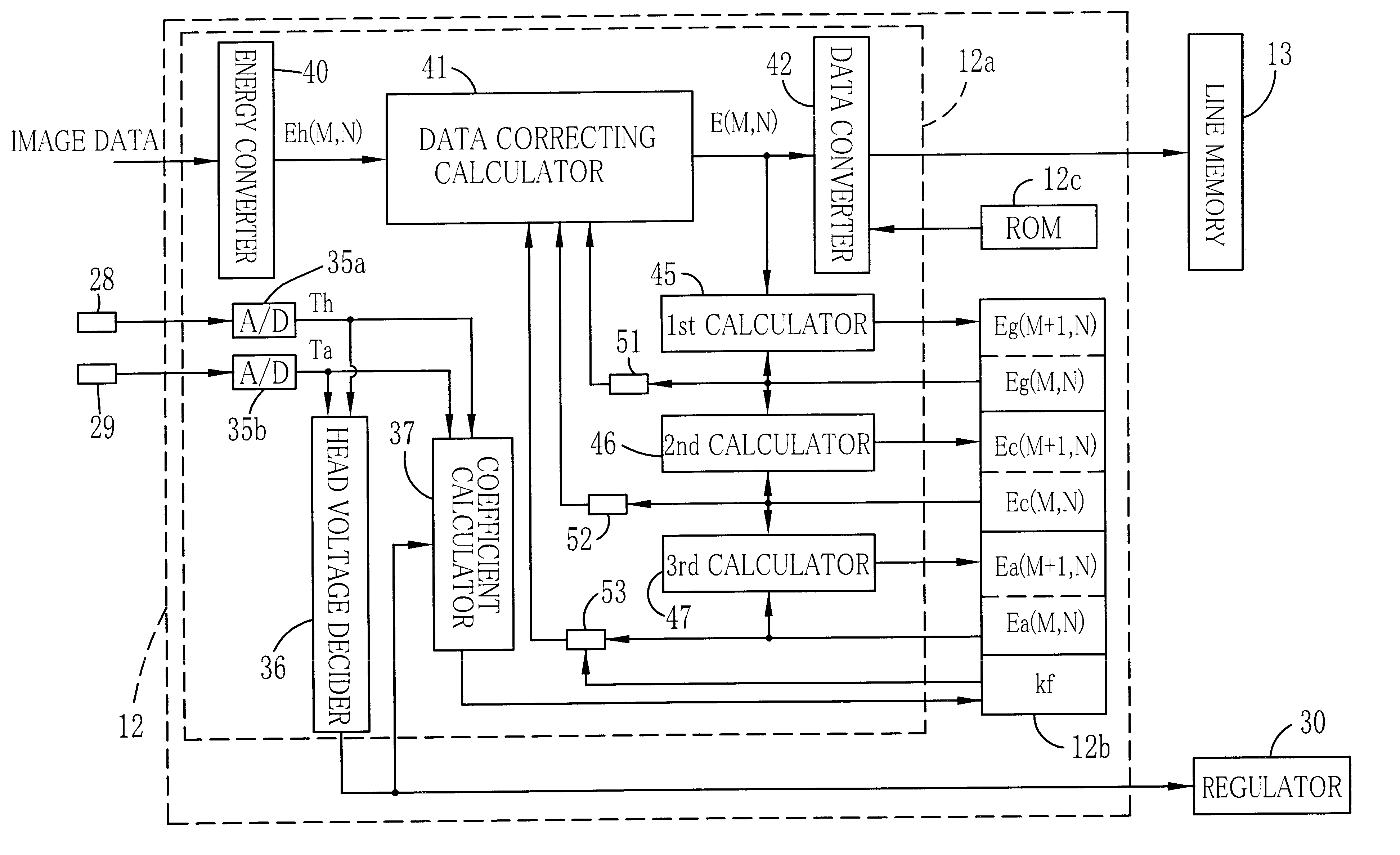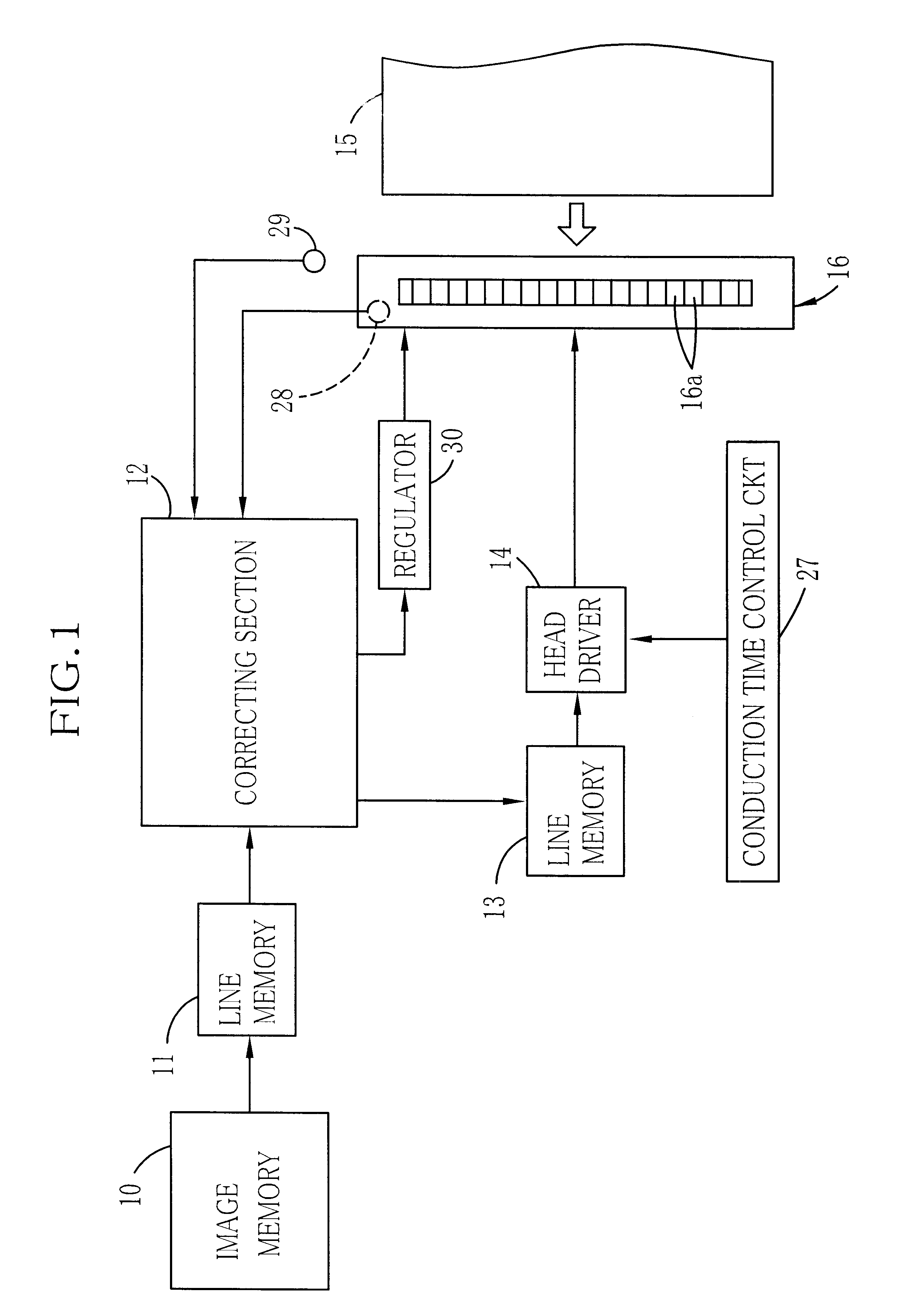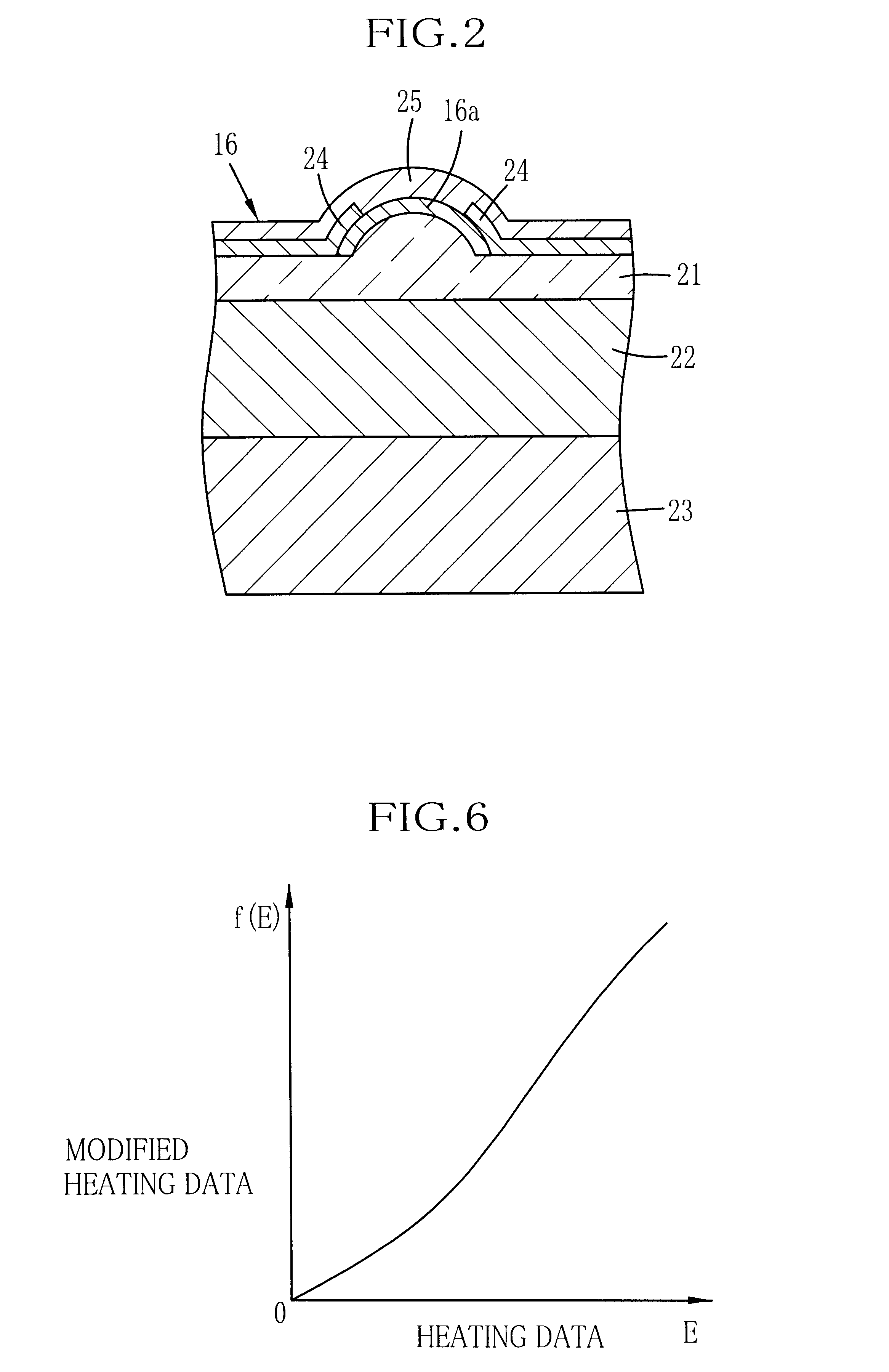Data processing method for eliminating influence of heat accumulation in thermal head of thermal printer
a data processing method and thermal printer technology, applied in printing and other directions, can solve the problems of environmental temperature having an influence on the densities of printed dots, rest stays unused or dissipated, and the density of printed dots can deviate from the designated densities,
- Summary
- Abstract
- Description
- Claims
- Application Information
AI Technical Summary
Benefits of technology
Problems solved by technology
Method used
Image
Examples
second embodiment
Therefore, five heat accumulation calculators and five coefficient multipliers are used in the second embodiment, to produce five kinds of correction data for each pixel by multiplying five kinds of heat accumulation data Eg1, Eg2, Eg3, Ec and Ea respectively by respectively predetermined coefficients. After the sum of the five correction data is subtracted from the basic heating data, the subsequent difference or the subtraction result is divided by a coefficient, to produce the corrected heating data.
Specifically, basic heating data obtained from the image data and the bias data for each pixel of each color is corrected according to the following formula:
E.sub.(M,P) ={Eh.sub.(M,P) -K12K13.multidot.Eg1.sub.(M,P) -K14K15.multidot.Eg2.sub.(M,P) -K16K17.multidot.Eg3.sub.(M,P) -K18K19.multidot.Ec.sub.(M,P) -K20.multidot.Ea.sub.(M,P) } / K11 (I)
where in
M: line serial number in a frame;
P: pixel serial number in a line;
f(): function regarding heat transmission efficiency from the heating el...
first embodiment
K11.about.K20: coefficients determined in a range from "0" to "1", taking account of materials, shapes and respective thermal conductivity of the heat accumulating layers 21 to 23, and other factors, in the same way as for the coefficients K1 to K6 of the
As shown conceptually in FIG. 5, provided that E.sub.OUT represents a heat energy value that is actually applied to the thermosensitive recording sheet 15 if one heating element is driven in accordance with uncorrected original image data, and E.sub.IN represents a heat energy value expected to be applied to the thermosensitive recording sheet 15 for recording a dot at a density designated by the original image data, the heat energy value E.sub.OUT may be given as follows:
E.sub.OUT (M,P) =K1.multidot.E.sub.IN (M,P) +K12K13.multidot.Eg1.sub.(M,P) +K14K15.multidot.Eg2.sub.(M,P) +K16K17.multidot.Eg3.sub.(M,P) +K18K19.multidot.Ec.sub.(M,P) +K20.multidot.Ea.sub.(M,P)
Because Eh.sub.(M,P) represents the heat energy value E.sub.IN(M,P) nece...
PUM
 Login to View More
Login to View More Abstract
Description
Claims
Application Information
 Login to View More
Login to View More - R&D
- Intellectual Property
- Life Sciences
- Materials
- Tech Scout
- Unparalleled Data Quality
- Higher Quality Content
- 60% Fewer Hallucinations
Browse by: Latest US Patents, China's latest patents, Technical Efficacy Thesaurus, Application Domain, Technology Topic, Popular Technical Reports.
© 2025 PatSnap. All rights reserved.Legal|Privacy policy|Modern Slavery Act Transparency Statement|Sitemap|About US| Contact US: help@patsnap.com



